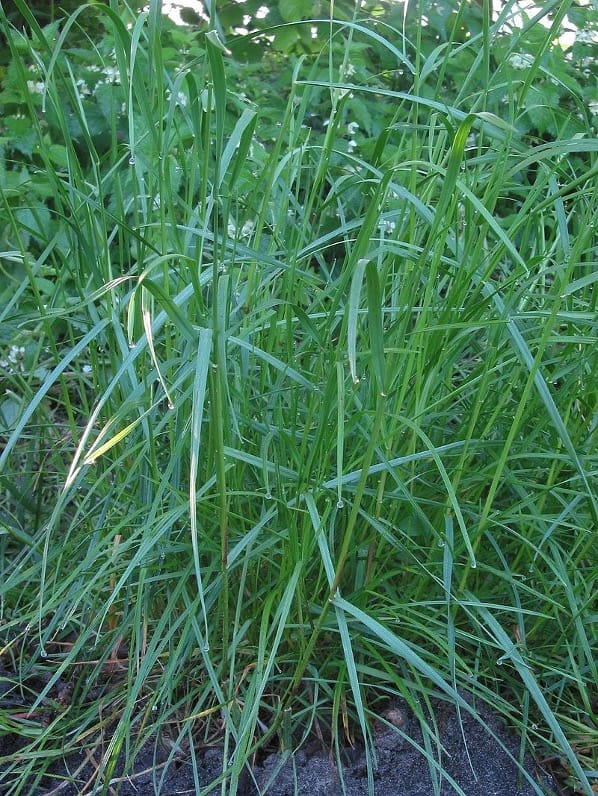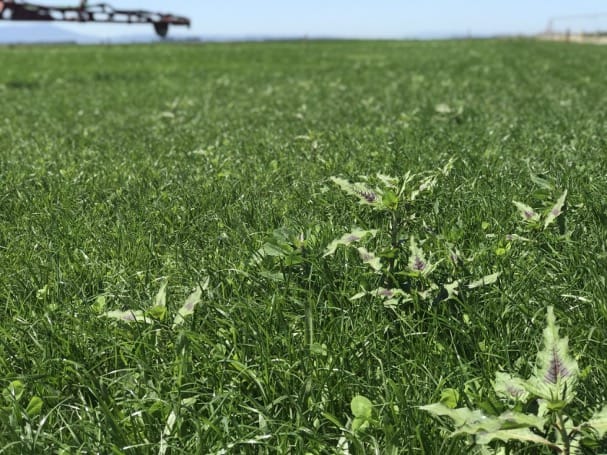The forage value index (FVI) is a rating system to help you choose the best ryegrass cultivar.
But before we get into the details, let us first understand why FVI ratings are needed and how it can help you earn better profits.
FVI for growing a better pasture
FVI earning better profits
FVI for performance and economic value
FVI for the best ryegrass cultivars
FVI ratings for Gippsland
FVI ratings for Tasmania
FVI ratings for southwest Victoria
FVI ratings for northern Victoria
Summary of FVI ratings for southeast Australia
The future of FVI ratings

FVI ratings can help you grow a better pasture
As a progressive farmer, you would be looking at different ways to improve your pasture. It is estimated that Australian farmers like you, invest about hundred million dollars every year to renovate their pastures.
About eighty percent of this investment goes towards planting perennial ryegrass. Yet we didn’t have information on which perennial ryegrass cultivar performs the best in which season and growing region.
Australian farmers invest about 80 million dollars every year, planting perennial ryegrass.
This was until Dairy Australia along with Agriculture Victoria, Dairy NZ, the Australian Seed Federation and the Meat & Livestock Australia introduced the forage value index (FVI) rating system.

FVI ratings can help you earn better profits
FVI ratings can give you critical information to help you choose the best ryegrass cultivar for a particular season in your growing region.
In other words, it helps you choose the best ryegrass cultivar for your situation and get maximum yield, and in turn earn better profits.

FVI takes into account cultivar performance and economic value
The FVI rating takes into account two important factors.
First, the performance value (PV) of the ryegrass cultivar. This is the extra dry matter a cultivar produces per hectare per season, in comparison to the dry matter produced by the standard Victorian cultivar.
And second, the estimated economic value (EV) of the ryegrass cultivar. This is the dollar value of the extra dry matter produced per hectare per season.
FVI is calculated by multiplying the Performance Value (PV) of each cultivar with its Economic Value (EV).
FVI ratings and the best ryegrass cultivars
FVI trials and ratings have so far only been done in the South-east Australian dairy regions of Gippsland, Southwest Victoria, Northern Victoria and Tasmania. You can get the latest FVI ratings information for these regions here. They soon plan to include the other regions of Australia as well.
So if you are a farmer located in one of these regions, here are a few insights that can inform you better:
FVI ratings for Gippsland:
The overall top three ryegrass cultivars for Gippsland that have the highest FVI ratings are Base AR37, Bealey NEA2 and Kidman AR1.
Base AR37 marketed by PGG Wrightson Seeds had the highest FVI rating of 207. Followed by Bealey NEA2 and Kidman AR1 both marketed by Barenbrug having FVI ratings of 186 and 160 respectively.
In early spring, the Fitzroy cultivar marketed by PGG Wrightson Seeds had the best results. However, in late spring, none of the new cultivars performed as well as the standard Victorian cultivar.
In summer, the Bealey NEA2 cultivar by Barenbrug performed the best. While the Base AR37 cultivar by PGG Wrightson Seeds performed best during autumn and winter.
FVI ratings for Tasmania:
Similar to Gippsland, the overall top three ryegrass cultivars for Tasmania that have the highest FVI ratings were also Base AR37, Bealey NEA2 and Kidman AR1.
Base AR37 marketed by PGG Wrightson Seeds had the highest FVI rating of 146. Followed by Bealey NEA2 and Kidman AR1 both marketed by Barenbrug having FVI ratings of 128 and 115 respectively.
In early spring, the Fitzroy cultivar marketed by PGG Wrightson Seeds had the best results. However, in late spring, none of the new cultivars performed as well as the standard Victorian cultivar.
In summer, the Bealey NEA2 cultivar by Barenbrug performed the best. While the Base AR37 cultivar by PGG Wrightson Seeds performed best during autumn and winter.
FVI ratings for southwest Victoria:
Similar to Gippsland and Tasmanis, the overall top two ryegrass cultivars for Southwest Victoria that have the highest FVI ratings were Base AR37 and Bealey NEA2. Halo AR37 took the third place.
Base AR37 marketed by PGG Wrightson Seeds had the highest FVI rating of 181. Bealey NEA2 by Barenbrug came second with a FVI rating of 166. And Halo AR37 by Agricom came third with a FVI rating of 140.
In early spring, the Fitzroy cultivar marketed by PGG Wrightson Seeds had the best results. However, in late spring, none of the new cultivars performed as well as the standard Victorian cultivar.
In summer, the Bealey NEA2 cultivar by Barenbrug performed the best. While the Base AR37 cultivar by PGG Wrightson Seeds performed best during autumn and winter.
FVI ratings for northern Victoria:
The overall top three ryegrass cultivars for northern Victoria that have the highest FVI ratings are Base AR37, Bealey NEA2 and Halo AR37.
Base AR37 marketed by PGG Wrightson Seeds had the highest FVI rating of 152. Followed by Bealey NEA2 and Kidman AR1 both marketed by Barenbrug having FVI ratings of 134 and 116 respectively.
In early spring, the Fitzroy cultivar marketed by PGG Wrightson Seeds had the best results. However, in late spring, none of the new cultivars performed as well as the standard Victorian cultivar.
In summer, the Bealey NEA2 cultivar by Barenbrug performed the best. While the Base AR37 cultivar by PGG Wrightson Seeds performed best during autumn and winter.
Summary of FVI ratings for southeast Australia
Across the four regions of southeast Australia, Base AR37 by PGG Wrightson Seeds and Bealey NEA2 by Barenbrug were the top two performing cultivars. They had the highest performance and economic values.

However, if you wanted the best performing early spring cultivar you should choose Fitzroy marketed by PGG Wrightson for best results. Also in late spring, nothing performed better than the standard Victorian cultivar.
The best performing summer season cultivar across all four regions was the Bealey NEA2 cultivar by Barenbrug. Similarly, the Base AR37 cultivar by PGG Wrightson was the best performing autumn and winter season cultivar.

The future of FVI ratings
Today, the FVI rating system is only limited to ryegrass cultivars in the growing regions of southeast Australia. However, there are plans to include other pasture species as well as other growing regions.
Over time, this might help FVI ratings become a leading source of independent and objective pasture species information for farmers and farm advisors. But, for now, it can help you select the best ryegrass cultivar to grow in your region, for this season.
This brings us to the end of this article. If you found it useful please share it with other farmers you know. If you have any questions, please let me know. I promise to answer them for you in the comments below.
Thanks for reading and until we meet in another article, happy farming!
- The Dedicated Team of Pasture.io, 2020-03-18